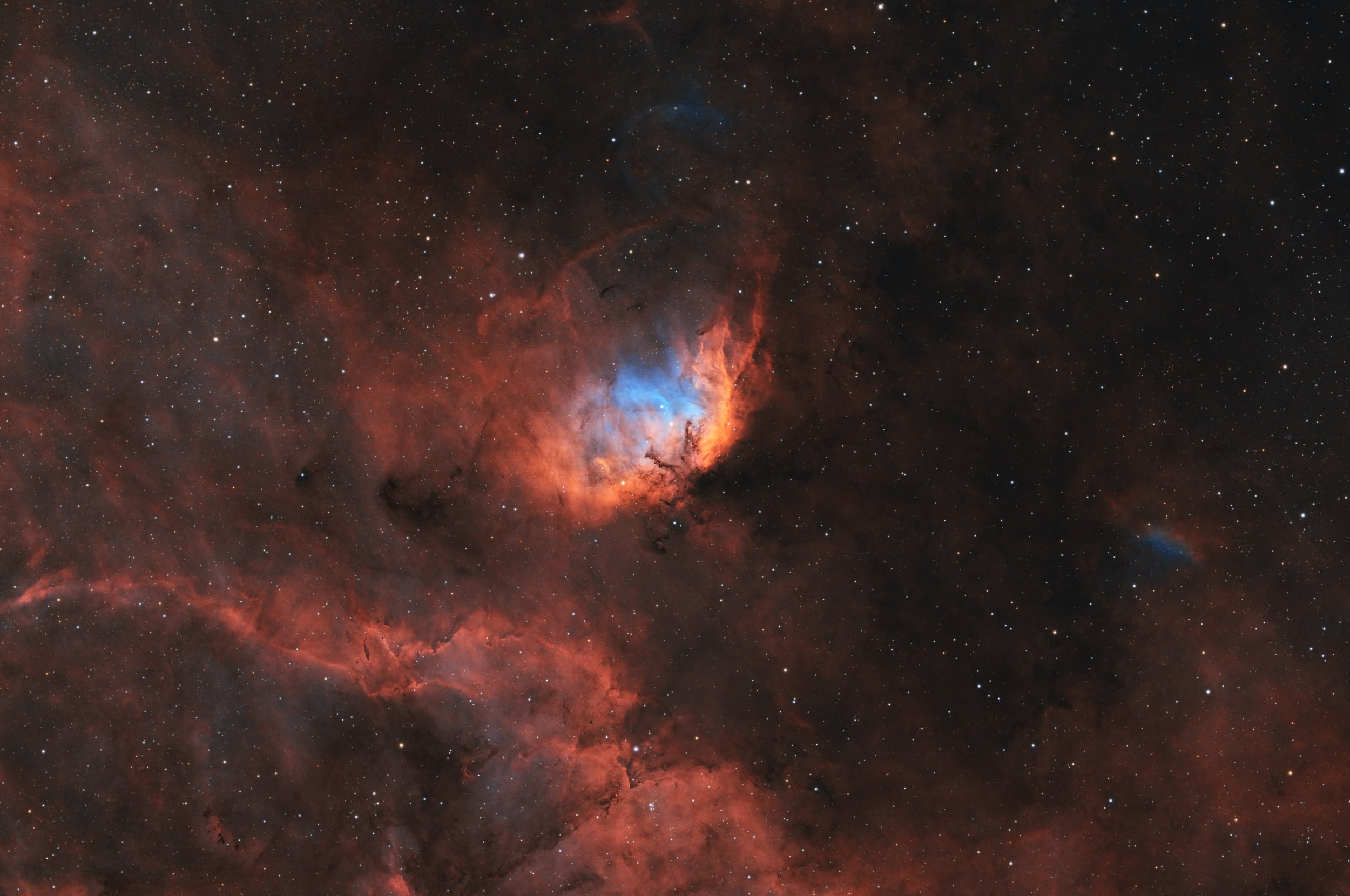
AAPOD2 Image Archives
SH2-101 Tulip Nebula
In this striking narrowband image captured in the Hubble Palette, Sh2-101, also known as the Tulip Nebula, unveils its cosmic beauty in vivid and ethereal colors. Nestled in the constellation Cygnus and situated approximately 6,000 light-years away from Earth, the Tulip Nebula showcases its intricate structure in a palette that emphasizes specific emissions from hydrogen, sulfur, and oxygen gases.
The image reveals the petals of the Tulip Nebula, with vibrant shades of red, green, and blue, created by the interplay of these elemental gases under the intense radiation of nearby stars. This cosmic scene, presented in the Hubble Palette, serves as a testament to the remarkable beauty and complexity of the universe, where the celestial canvas is painted with the brushstrokes of light, matter, and cosmic forces.
The Tulip Nebula Sh2-101
Image Description and Details:In a constellation rich in nebulae such as the Swan, there is an object commonly called the Tulip nebula. An incandescent cloud of interstellar gas and dust cataloged in 1959 by the astronomer Stewart Sharpless as Sh2-101.About 8,000 light years away from Earth, the ultraviolet radiation from the young stars on the edge of the Cygnus OB3 association ionizes and feeds the emissions of the Tulip Nebula.Near the center of the nebula there is a very bright star called HDE 227018, while in the upper right you can see an arch originating from Cygnus X-1, a microquasar, and from the star with which it shares a binary system. This is one of the most intense X-ray sources measurable from Earth, probably attributable to the presence of a black hole. Cygnus X-1 was in fact at the center of a bet between physicists Stephen Hawking and Kip Thorne, on the presence or absence of a black hole and ended in the 90s when the data reinforced the hypothesis of its existence.Shooting DataTulip Nebula Sh2-101 | Hubble Palette SHOSii 49x300'' | Ha 77x300'' | Oiii 56x300''Sky-Watcher 200/800 f/4 | AZEQ6-GT | QHY 163M | Optolong narrowband FiltersFrames captured between 26/29th of Jun 2020 from Carl Sagan Observatory in Maranello (Italy).Bortle 5 / SQM 19.65
COPYRIGHT: Luca Fornaciari



